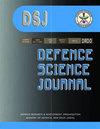钒对纳米晶FeCoZrBCu熔体纺丝合金结构和软磁性能的影响
IF 0.8
4区 工程技术
Q3 MULTIDISCIPLINARY SCIENCES
引用次数: 0
摘要
本文研究了含x0.1y2、x0.1y4和x0.1y6的(Fe1-xCox) 88- yvyzr7b4cu1合金熔体纺丝带的玻璃化形成能力、结构和软磁性能。对X0.35y2、x0.35y4和x0.35y6进行了研究。所有合金经熔体纺丝后均为完全非晶态。x0.1系合金的非晶态带退火后,非晶态基体中形成bcc α-Fe(Co)相和Fe2Zr相,而x0.35系合金的非晶态带退火后,非晶态基体中只形成bcc α-Fe(Co)相。高精度晶格参数计算表明,V的加入影响了低Co x0.1合金的相形成。导致bcc α-Fe(Co)相体积分数降低,促进了Fe2Zr相的生成。在x0.1和x0.35合金中,Co含量越高,非晶相居里温度越高,而V含量越高,非晶相的居里温度越低。由于Co含量较高,x0.35合金的饱和磁化强度(Ms)高于x0.1合金,而由于其无磁性,Ms随V含量的增加而降低。由于bcc α-Fe(Co)相和Fe2Zr相的体积分数较低,x0.35合金退火后矫顽力有所提高。x0.35合金的矫顽力随V添加量的增加而降低,x0.35y6合金的矫顽力最低,为0.13 Oe,是所报道的FeCoZrBCu合金中矫顽力最低的合金之一。本文章由计算机程序翻译,如有差异,请以英文原文为准。
Effect of Vanadium Addition On Structure And Soft Magnetic Properties of Nanocrystalline FeCoZrBCu Melt Spun Alloys
In this report, glass forming ability, structure and soft magnetic properties of melt spun ribbons of (Fe1-xCox) 88-yVyZr7B4Cu1alloys with compositions x0.1y2, x0.1y4 and x0.1y6 & x0.35y2, x0.35y4 and x0.35y6 have been investigated. All alloys were found to be fully amorphous after melt spinning. Annealing of amorphous ribbons of x0.1 series alloys leads to the formation of bcc α-Fe(Co) phase and Fe2Zr phase in the amorphous matrix, while annealing of amorphous ribbons of x0.35 series alloys, leads to the formation of only bcc α-Fe(Co) phase in the amorphous matrix. High precision lattice parameter calculation revealed that V addition influences the phase formation in low Co containing x0.1 alloys. It leads to low volume fraction of bcc α-Fe(Co) phase and promotes Fe2Zr phase. A higher Co content increases the Curie temperature of amorphous phase, while V addition decreases the TC of amorphous phase in both x0.1 and x0.35 series of alloys. Saturation magnetization (Ms) of x0.35 alloys are higher than of x0.1 alloy due to higher Co content and the Ms decreases with increasing V content due to its non-magnetic nature. Coercivity was found to be increased with annealing in x0.35 alloys due to the low volume fraction formation of bcc α-Fe(Co) phase and Fe2Zr phase. The coercivity decreases with increasing V addition in x0.35 alloys as spun ribbons and a lowest coercivity of 0.13 Oe has been obtained in x0.35y6 alloy which is one of the lowest among FeCoZrBCu alloys reported.
求助全文
通过发布文献求助,成功后即可免费获取论文全文。
去求助
来源期刊

Defence Science Journal
综合性期刊-综合性期刊
CiteScore
1.80
自引率
11.10%
发文量
69
审稿时长
7.5 months
期刊介绍:
Defence Science Journal is a peer-reviewed, multidisciplinary research journal in the area of defence science and technology. Journal feature recent progresses made in the field of defence/military support system and new findings/breakthroughs, etc. Major subject fields covered include: aeronautics, armaments, combat vehicles and engineering, biomedical sciences, computer sciences, electronics, material sciences, missiles, naval systems, etc.
 求助内容:
求助内容: 应助结果提醒方式:
应助结果提醒方式:


